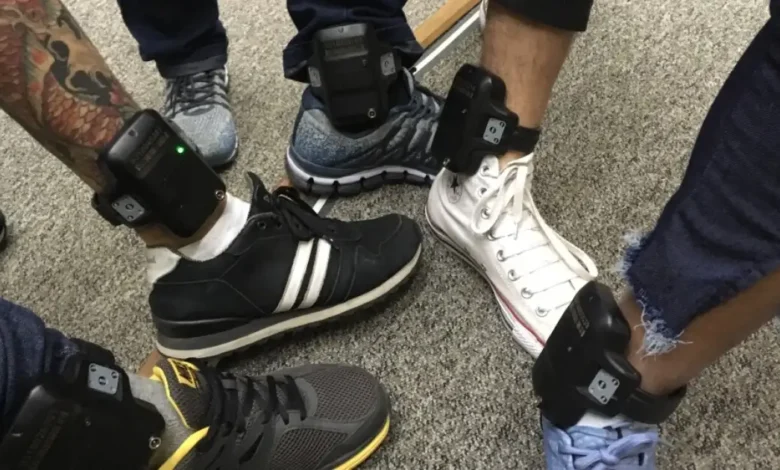Guardian: Ankle bracelet and constant monitoring.. This is how Britain treats new immigrants

A lawyer specialising in defending the rights of vulnerable groups of asylum seekers in Britain has warned they may be at “staggering risk and unimaginable abuse.”
In an article by the Guardian, Janet Farrell explained that once on British soil, an asylum seeker was locked up and told that he might be transferred to the State of Rwanda, then released, but after having had his ankle shackled to an electronic bracelet.
Thus, according to counsel, the asylum seeker is monitored by the GPS electronic positioning device (GPS) by the State 24 hours a day for the duration of his or her provisional bail.
“This is the welcome that (Britain) takes in the refugees in 2022,” Farrell says in an ironic accent.
Pending next fall’s consideration of the cases brought by lawyers on behalf of their asylum-seekers facing deportation to Rwanda, these irregular migrants may be held indefinitely.
Those released on bail may have to be subject to electronic surveillance.
The Global Positioning System (GPS) was first used in 2021 as a means of monitoring those subject to immigration through ankle-fencing, while the authorities intend to use other devices such as smart watches from the autumn of this year.
Counsel argues that this surveillance system will make it possible to obtain complete data on where and when the person visited, accurately 24 hours a day.
These data collected provide an accurate picture of the asylum seeker’s customs, religious and political beliefs, relationships and health conditions, as well as the private life of the persons with whom he or she communicates.
Farrell described these actions as an “intrusive” method for those fleeing authoritarian regimes or suffering from the effects of trauma or mental ill health, which may be particularly concerning to them.
According to the Guardian article, the UK Home Office has unrestricted access to all information when a breach of immigration security is suspected, such as the device running out of charge or the wearer’s failure to inform it on time.
The authorities may also retain data for many years, long after the device has been removed.





